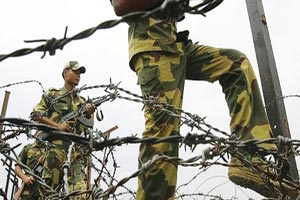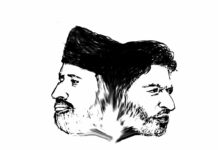Iqbal Zargar
 Almost two decade ago in North Kashmir’s Kupwara district, Indian Army conducted a late night search operation. In that frozen night of December, my friend’s father was picked up as he figured on the suspicion radars. Later his bullet-ridden body was found abandoned in the nearby woods.
Almost two decade ago in North Kashmir’s Kupwara district, Indian Army conducted a late night search operation. In that frozen night of December, my friend’s father was picked up as he figured on the suspicion radars. Later his bullet-ridden body was found abandoned in the nearby woods.
My friend, then a 6-year-old, was perhaps too young to make sense of his loss. Yet, he remembers: “That day when the news of Abu’s killing reached us, there was no loud mourning at home. In silence, everyone was shedding helpless tears. Perhaps, time was conspiring. Even loud mourning had its costs!”
A week later, my friend was sent off to Srinagar for schooling. He would visit home only once in a year. While visiting home in the fall of 1998, he observed something very ‘intriguing’. He saw army donning the hat of a pacifist. In his own words: “I saw scores of blank-faced villagers assembled in the courtyard of village school listening army officials who were talking high about a new beginning, a new initiative. Every time army officials spoke, those simpletons would nod their heads in approval.”
He often observed such gatherings whenever he visited home. But it took him a while to understand that all this was done under army’s much-touted Sadbhavana or Goodwill operation. Over the years, he also realised: there aren’t many takers of army’s ‘goodwill gesture’ in valley. In fact, his own acrimony against army deepened over the years, as he believes: “Army made me orphan!”
For him, each and every confidence building measure started by army in the valley is simply at odds with the reality or what he calls “an attempt to wash off its offenses”. Be it army’s civic works or retired General Atta Hasnain’s “heart as weapon” motto; everything is but a farce for my friend: “I am no naysayer; but I can’t accept something which is paradoxical in itself!”
Otherwise expected to guard borders, army launched operation Sadbhavana in 1998 with a motive to “win” the hearts and minds (WHAM) of people by “rebuilding” their lives devastated by conflict.
To support army’s initiative, ministry of defence allocated Rs 276.08 crore from 1998 to 2008 to promote various multi-faceted activities in the state. It includes running schools and orphanages, constructing roads and bridges, installing hand pumps and electrifying villages, giving free medical services and organising excursion besides education tours.
But inspite of all these works, some analysts believe that Sadbhavana couldn’t woo youth aged between 18 and 21 years that comprise 60 per cent of the state’s population.
In fact, Lt General Arjun Ray who redefined the role of armed forces in the troubled state by credited himself with “scripting” Sadbhavana believes the actual impact of “army’s goodwill” staggers just above 50 per cent of the desired targets. (Ray who wrote his first book Kashmir Diary, The Psychology of Militancy was later awarded the Param Vishisht Seva medal for his distinguished services.)
In the fall of 2014, Indian media floating on embedded journalism projected army as an ultimate “saviours” of Kashmiris caught in worst floods. But once the troubled waters receded, the spin of ‘national’ media backfired. Amid the mounting accounts of local heroics, the army’s PR exercise got ripped apart. The loaded criticism forced army’s top official to commend the local heroism in rescue operations. Besides they admitted that past can’t be ‘wiped out’ by any good works.
Now after floods, Lt General Subrata Saha (GOC of the Srinagar-based army’s 15 corps) says army would play an important role in building Naya Kashmir. Army’s growing passion for valley’s civil affairs has set off scores of views. My friend offers his: “Army’s obsession to lend its ‘helping hand’ in valley’s civil affairs is like a situation where one is leaving me bleeding and then becoming my doctor!”
(The author is a Srinagar based youth who after completing his Masters landed directly into an unemployment mess.)















